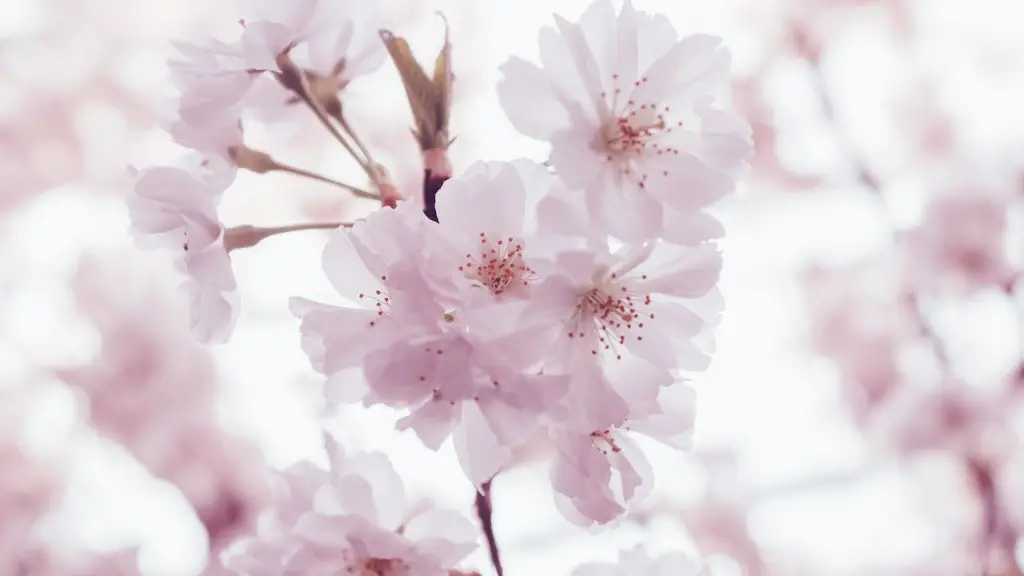Meyer lemon trees are one of the most popular varieties of citrus trees and can be a great addition to any home garden. But how often should you water a Meyer lemon tree? The answer depends on several factors, including the tree’s size, soil type, time of year, and climate.
Generally, it’s important to water Meyer lemon trees deeply, about one to two inches per week, depending on the season and soil type. The best way to do this is to soak the soil around the tree, giving it plenty of water without creating standing water around the trunk. During the summer months, you may want to increase the frequency of watering, as the soil will likely dry out more quickly. It’s also important to make sure to keep the area around the tree free of weeds and debris, as this can interfere with proper drainage.
In addition to watering your Meyer lemon tree regularly, it’s important to fertilize it on a regular basis. Organic fertilizers are best, such as aged compost or aged manure, which should be applied directly to the soil around the tree. Fertilize once a month during the growing season, and once every few months during the winter. Avoid fertilizers containing too much nitrogen, as this can cause the tree to produce more leaves without much fruit.
Keeping your Meyer lemon tree healthy also requires proper pruning. If the tree gets too tall, it can be more difficult for the fruits to ripen. Pruning should be done in the late winter or early spring, and any dead or diseased branches should be removed. Pruning can help promote healthy, vigorous growth and encourage more fruit production.
Finally, it’s important to protect your Meyer lemon tree from pests and diseases. You can do this by providing adequate spacing between your tree and other citrus trees. Avoid wetting the foliage and fruit, as this can spread diseases. And use organic, environment-friendly pest control methods when necessary.
Soil Type
The type of soil that your Meyer lemon tree is planted in can have a big impact on how often you need to water it. Loamy, sandy soils will require more frequent watering, as they drain quickly and don’t hold as much moisture. Clay soils, on the other hand, can hold more moisture but should be watered more sparingly to avoid standing water and root rot. If you’re not sure what type of soil your tree is planted in, you can take a sample to your local agricultural extension office for a soil test.
If the soil is dense and heavy, it can be amended with compost, gypsum, and/or sand to improve drainage and make sure the tree gets enough water. If the soil drains too quickly and cannot hold moisture, you can add organic matter to help retain moisture. Either way, being aware of your tree’s soil type will help you determine the best watering schedule.
In addition to soil type, it’s important to consider the climate when determining how often to water your Meyer lemon tree. Trees need less water in dry climates, as the lack of rain helps supplement the tree’s water needs. In tropical and subtropical climates, however, more water may be necessary due to higher temperatures, humidity, and prolonged periods of drought.
Finally, the size of your Meyer lemon tree will also determine how often you need to water it. Smaller trees will need less water than larger trees, but too much water can still be a problem for all sizes of trees. Monitor the soil moisture closely, and adjust your watering schedule accordingly.
Mulching
Mulching your Meyer lemon tree is a great way to help conserve moisture and regulate soil temperature. Mulch helps to insulate the soil and reduce evaporation, which can help reduce the need for frequent watering. Organic mulches, such as wood chips, provide additional benefits by supplying the soil with nutrients.
It’s important to apply mulch correctly and evenly, making sure to leave enough of a gap between the soil and the mulch to allow proper water drainage. Too much mulch can cause water to accumulate around the base of the tree, which can lead to root rot or other moisture-related problems. Monitor the soil moisture closely, and adjust the thickness of the mulch layer as necessary.
In addition to conserving moisture, mulch can help control weeds and protect the tree’s roots from temperature fluctuations. It can also provide additional nutrients through decomposition of the organic matter. Avoid using inorganic mulches such as gravel or shells, as these can cause drainage issues and won’t provide the same benefits as organic mulches.
Irrigation
If your Meyer lemon tree is not getting enough water, you may want to consider using irrigation techniques to supplement the tree’s water needs. Drip irrigation is an efficient way to provide water directly to the roots, and minimal water is lost to evaporation. Soaker hoses can also be used to slowly release water around the tree, allowing it to slowly soak in and reach the roots.
You can also set up a sprinkler system to water larger areas around your Meyer lemon tree. Make sure to adjust the time, distance, and angle of the sprinkler to avoid oversaturating any one area and keep the water away from the tree’s trunk and foliage. Adjust the amount of water as needed throughout the season, depending on the tree’s needs.
Monitor your Meyer lemon tree closely, and be sure to adjust your watering schedule as necessary. Too little water can cause the tree to suffer from stress and decreased fruit production, while too much water can cause root rot and fungus problems. With proper care and attention, your Meyer lemon tree will thrive and reward you with juicy, flavorful fruits.
Time of Year
The time of year will also affect how often you need to water your Meyer lemon tree. During the warm summer months, the soil will likely dry out more quickly and will need to be watered more frequently. Conversely, during the winter months, the tree will require less water as the cooler temperatures cause the soil to retain more moisture.
In general, the tree should be watered about once a week during the summer months and then every two weeks in the winter. It’s important to monitor the soil moisture closely and adjust the watering schedule as needed. As a rule of thumb, if the top inch or two of soil feels dry, it’s time to water the tree.
In addition, consider the amount of rainfall that your tree is getting each month. Depending on the climate, you may want to reduce the frequency of watering if the tree is getting enough moisture from rain and other sources.
Monitoring Soil Moisture
In order to make sure your Meyer lemon tree is getting enough water, it’s important to monitor the soil moisture. The soil should be damp, but not waterlogged; if it is too wet or too dry, this can lead to problems with stress and fruit production. You can gauge the soil moisture by sticking your finger into the soil or using a meter.
If the soil is too dry, increase the frequency of watering and make sure the water is reaching the roots. If the soil is too wet, reduce the frequency and make sure the tree isn’t standing in water. Consider adding mulch to help conserve moisture and regulate soil temperature, and monitor the moisture level closely throughout the season.
Foliar-Feeding
Foliar-feeding is another method you can use to supplement your Meyer lemon tree’s water needs. Foliar-feeding involves applying water–soluble fertilizers directly to the leaves and stems of the tree, as this allows them to be absorbed quickly, providing key nutrients and water directly to the tree’s foliage.
However, it’s important to not to over–fertilize the tree, as this can lead to burn the leaves, or cause the tree to produce more leaves instead of fruit. Use a water–soluble fertilizer, and dilute it according to the manufacturer’s instructions. Avoid applying too late in the day, as the water on the leaves can lead to fungal diseases.
Foliar-feeding can be a great way to supplement your Meyer lemon tree’s water needs, but it should not be used as a replacement for regular watering. Monitor your tree’s soil moisture, and adjust your watering schedule as necessary.
Protect from Pests and Diseases
In addition to watering and fertilizing, it’s important to protect your Meyer lemon tree from pests and diseases. Citrus can be particularly prone to pests such as aphids, caterpillars, and whiteflies. These pests can cause leaves to yellow and, if left untreated, can eventually kill the tree.
Citrus also can be prone to fungal diseases, such as root rot, canker, and scab, which can be fatal if not treated. Applying a preventative fungicide in the spring, before the budding season, can help protect your tree. Monitor your tree closely, and be sure to use organic pest and disease controls when necessary.
A healthy Meyer lemon tree not only looks great, but also rewards you with delicious, nutritious fruits. With proper care and attention, your Meyer lemon tree will thrive and give you plenty of delectable fruits each year. Monitor your tree’s water needs, and adjust your watering schedule according to soil type, climate, and season. Keep the area around the tree clear of weeds and debris, fertilize regularly, and prune as necessary. And protect your tree from pests and diseases using organic, environment-friendly methods.




